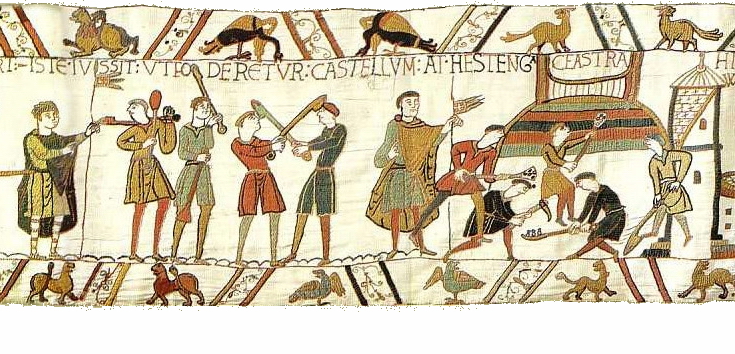Wealthy Pevenesel was sacked and looted by the exiled Godwin in 1051 and 1052 AD, and after his restoration to power all the Anglo-French were killed, enslaved or exiled. Earl Harold refused to return the port to Fecamp Abbey when petitioned by Abbot John in 1054 AD after Godwin's death, despite the support of King Edward.
Naturally I also suggested that great and ancient estuarine port a mere 30 miles from Normandy was the secure sandy harbour where the Normans landed their fleet in 1066 and built their encampments and fortifications while waiting the approach of King Harold and the English. The landing place was styled Hastenge ceastra in scene 45 of the Bayeux Tapestry and Hastinge portus castris at line 597 of the Carmen, earlier described at line 575 as the castra marina.
Not only did the talk go well, but it seems to have caused something of a local stir. I am getting emails from householders and dog walkers all looking at the Brede Valley with new eyes to discover its secrets.
The following day I went myself to Icklesham to walk the footpaths and trace the geography to the lines of the Carmen. It fits perfectly to several of the geographic references. I stood on Hog Hill near the summit and imagined Harold's remains being laid there under a cairn of stones, just over 948 years ago, as described in lines 591-92.
By order of the duke, here King Harold lies at peace,
That he may keep watch over sea and strand.
The pieces of the puzzle continue to fall into place, and perhaps soon there will be a better organised effort to gather the evidence and tell the story of 1066.


No comments:
Post a Comment